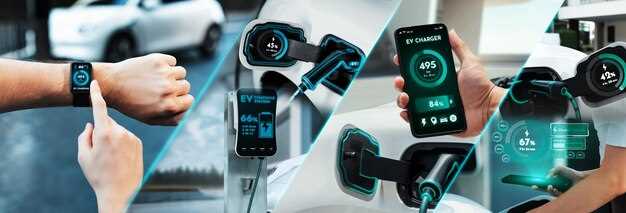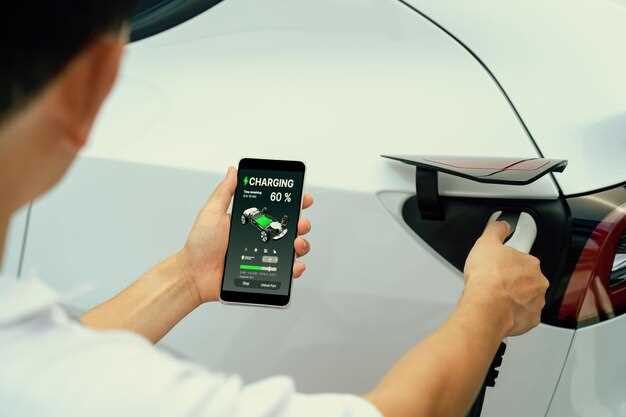
The rapid evolution of electric vehicles (EVs) has ushered in a new era of sustainability and technological innovation. Among the most significant developments is the emergence of wireless charging technologies, which promise to revolutionize the way we power our electric cars. This paradigm shift not only enhances the convenience of charging but also aligns with the growing demand for efficient and eco-friendly energy solutions.
Wireless charging systems utilize electromagnetic fields to transfer energy from a charging pad to an EV, eliminating the need for physical connectors and cables. This innovative approach offers numerous advantages, including reduced wear and tear on charging equipment, increased accessibility for users, and greater flexibility in charging infrastructure placement. As cities and regions race to install these systems, the integration of wireless technology into existing transportation networks is becoming increasingly feasible.
Current perspectives on wireless charging for electric vehicles highlight both challenges and opportunities. While technological advancements continue to improve charging efficiency and reduce costs, issues such as standardization and infrastructure investment remain critical obstacles. However, the potential benefits, including enhanced user experience and the promotion of electric vehicle adoption, make this technology a focal point for future development in the automotive industry.
Advantages of Wireless Charging for Electric Vehicles
Wireless charging technology offers several significant benefits for electric vehicles (EVs), streamlining the overall user experience. One of the primary advantages is convenience; drivers can simply park their vehicles over a charging pad without the need for physical connection cables. This eliminates the hassle of plugging in and unplugging, making the charging process effortless.
Another critical advantage is increased accessibility. Wireless charging stations can be installed in various locations, including public spaces and residential areas, allowing for simple integration into urban infrastructure. This flexibility can lead to broader adoption of EVs, as potential users are more likely to engage with a more convenient charging solution.
Additionally, wireless charging tech can enhance safety. By removing the need for cables, the risk of tripping hazards or damage to connectors is minimized. Furthermore, the absence of physical connections reduces wear and tear on both the charging infrastructure and the vehicle’s charging port, potentially lowering maintenance costs.
Efficiency in charging is another noteworthy benefit. Modern wireless charging systems can provide high power transfer rates, ensuring that EVs can recharge quickly compared to traditional plug-in methods. This rapid charging capability aligns well with the increasing demand for efficient use of time among drivers.
Finally, wireless charging has significant potential for the development of dynamic charging systems. With advancements in infrastructure, vehicles can charge while driving on specially equipped roads, revolutionizing the way energy is consumed and potentially reducing range anxiety among users. This evolving tech represents a shift towards more sustainable and efficient energy use in everyday transportation.
Technical Challenges in Implementing Wireless EV Charging
Wireless charging for electric vehicles (EVs) presents several significant technical challenges that must be addressed to ensure efficient and widespread adoption. These challenges involve infrastructure requirements, energy transfer efficiency, safety protocols, and cost considerations.
Infrastructure Requirements
- Installation Costs: The deployment of wireless charging stations requires substantial investment in infrastructure, including ground installation and integration with existing power grids.
- Standardization: There is a lack of industry standards for wireless EV charging. Ensuring compatibility across different vehicle models and manufacturers presents a challenge.
- Space Constraints: The implementation of charging pads requires adequate space for setup, which can be difficult in urban environments.
Energy Transfer Efficiency

- Loss of Energy: Wireless charging systems can suffer from energy losses during the transfer process, reducing overall efficiency compared to wired methods.
- Alignment Issues: Improper alignment between the vehicle and charging pad can lead to reduced energy transfer rates or complete failure to charge.
- Heat Generation: Energy losses can result in excessive heat, which may pose safety risks and affect system longevity.
Safety Protocols
- Electromagnetic Interference: Ensuring that wireless charging systems do not interfere with other electronic devices is critical for safety and functionality.
- Human Safety: It is crucial to design systems that prevent accidental contact with live components during the charging process.
- Vehicle Compatibility: Different EV models may react differently to wireless charging technologies, requiring tailored solutions for various designs.
Cost Considerations
- High Initial Investment: The cost of developing and installing wireless charging technology is significantly higher than traditional charging stations.
- Operational Costs: Maintenance and repair of wireless charging systems can be more complex and expensive compared to conventional charging infrastructure.
- Market Acceptance: The higher costs associated with wireless charging may deter consumers and manufacturers from fully embracing the technology.
Addressing these technical challenges is crucial for the successful implementation of wireless EV charging systems. Progress in technology, standardization, and cost reduction initiatives will play a pivotal role in paving the way for a more sustainable future in electric vehicle charging.
Future Trends in Wireless Charging Technology for Electric Cars

The advancement of wireless charging technology for electric vehicles (EVs) is anticipated to revolutionize the way we power our cars. One significant trend is the integration of increased charging efficiency. Future systems will focus on enhancing the power transfer rates, which will decrease the time required to charge EVs significantly. This improvement will make wireless options more competitive with traditional plug-in charging methods.
Another trend is the development of ultra-fast charging stations that can handle multiple EVs simultaneously. These stations will employ advanced algorithms to distribute power efficiently among vehicles, ensuring optimal charging speeds. As the infrastructure grows, the convenience of wireless charging will become more appealing to EV owners, accommodating a broader range of charging needs.
Moreover, the concept of dynamic wireless charging is gaining traction. This technology allows vehicles to receive power while in motion, using embedded charging systems in roadways. Such innovation will potentially eliminate range anxiety for EV users, enabling continuous power supply during travel and enhancing the overall driving experience.
Smart charging systems will play a crucial role in the future of wireless technology. These systems will connect EVs to the internet, allowing real-time data exchange between vehicles, charging stations, and grid networks. Additionally, smart features will enable users to schedule charging during off-peak hours, reducing costs and enhancing grid stability.
Environmental sustainability is also a driving force behind future developments in wireless charging. As renewable energy sources become more prevalent, integrating these technologies to power charging infrastructure will promote greener EV charging solutions. This synergy is expected to contribute significantly to lowering carbon footprints and improving air quality.
In conclusion, the future of wireless charging technology for electric cars is poised for significant advancements. Enhanced efficiency, dynamic charging capabilities, smart systems, and a focus on sustainability will shape the evolution of charging tech, making it a crucial component of the next generation of EV infrastructure.
